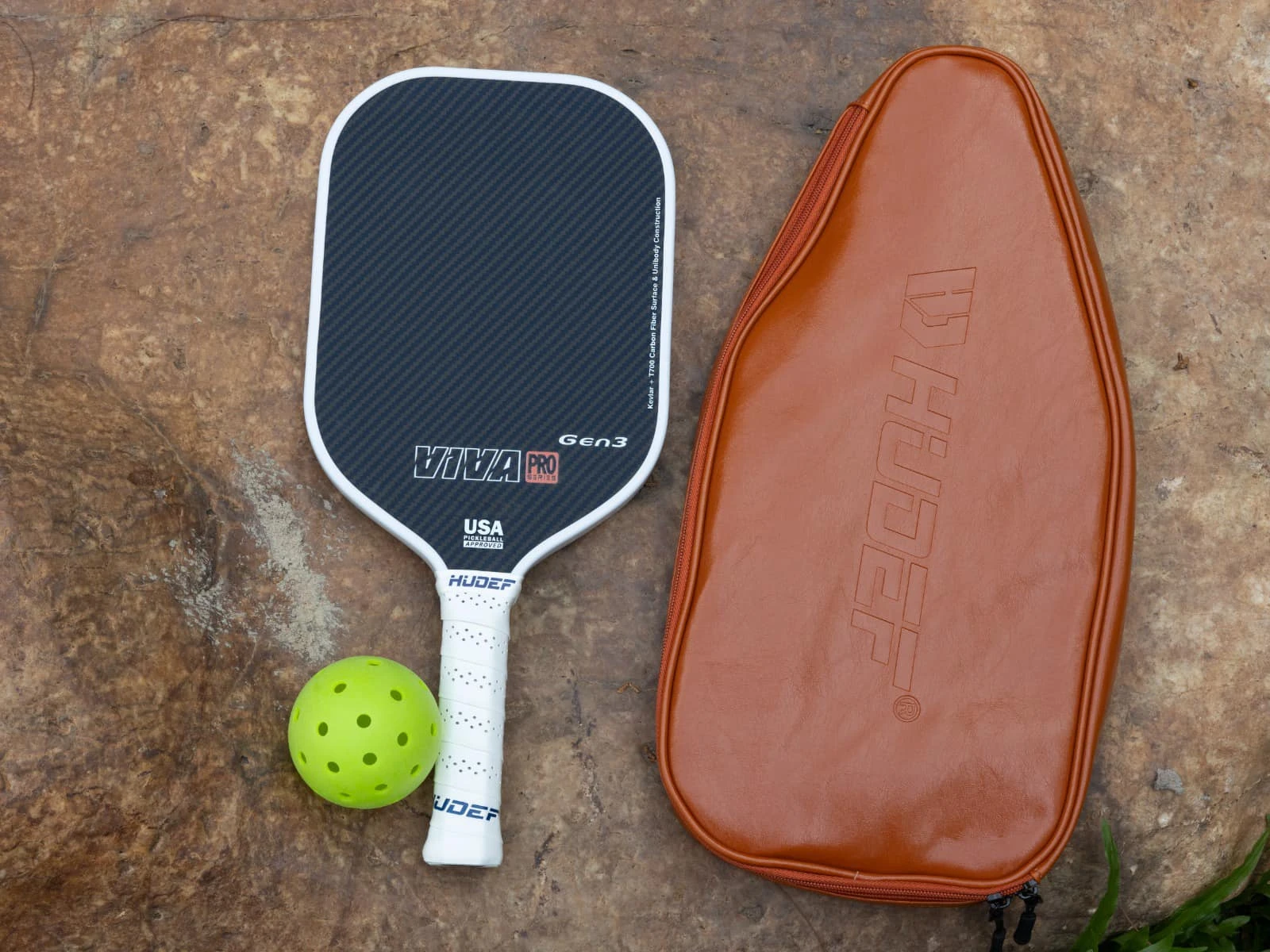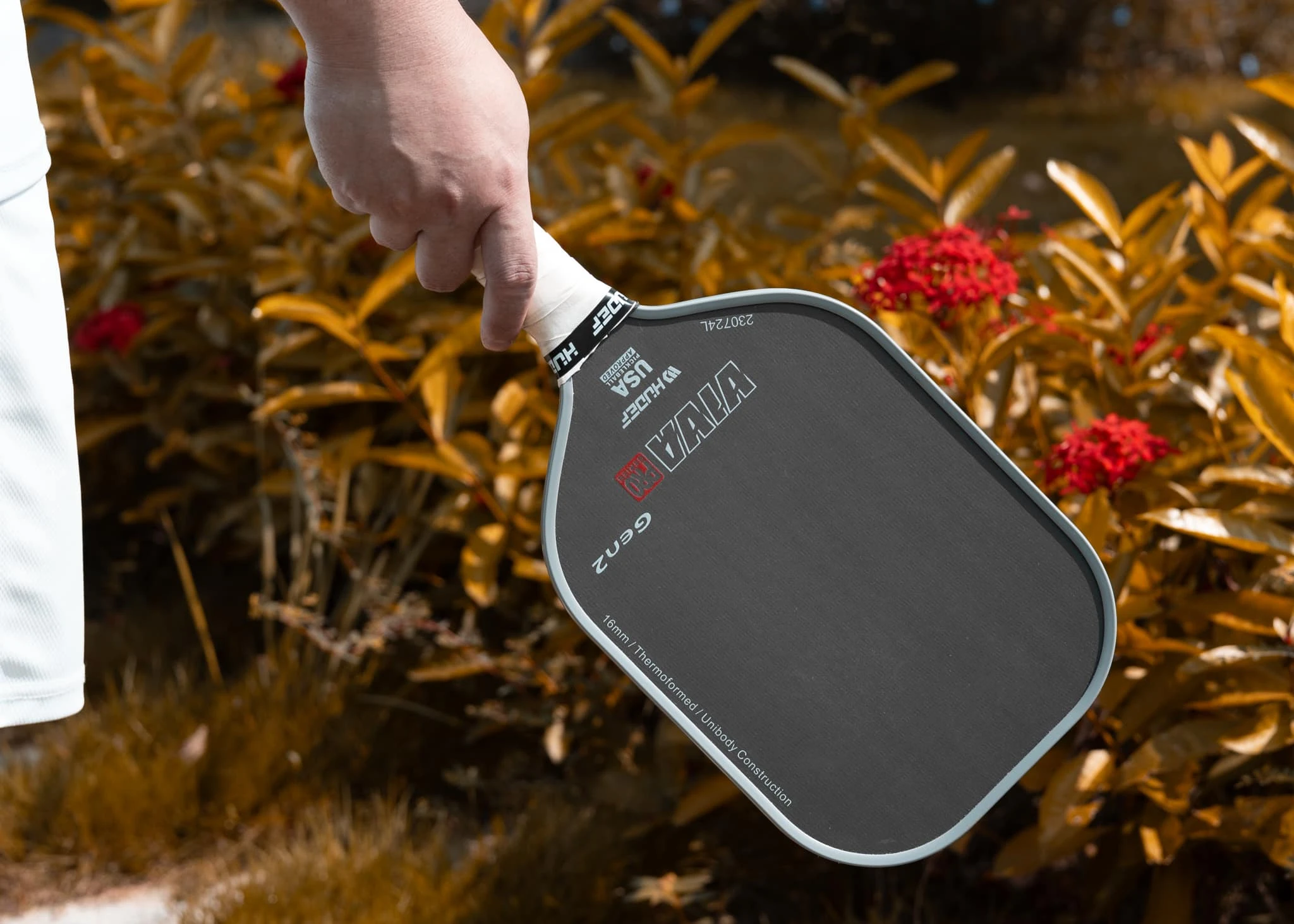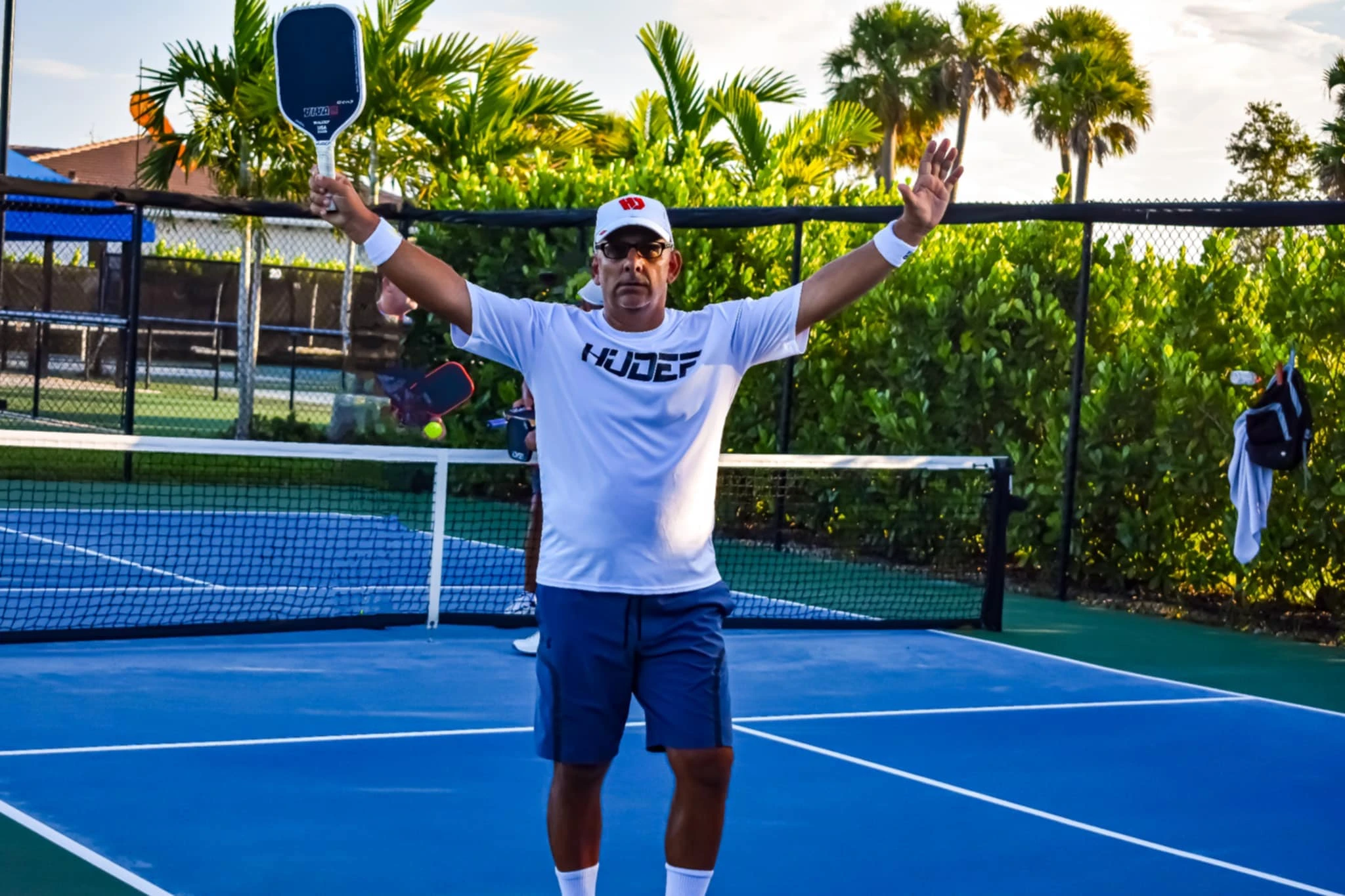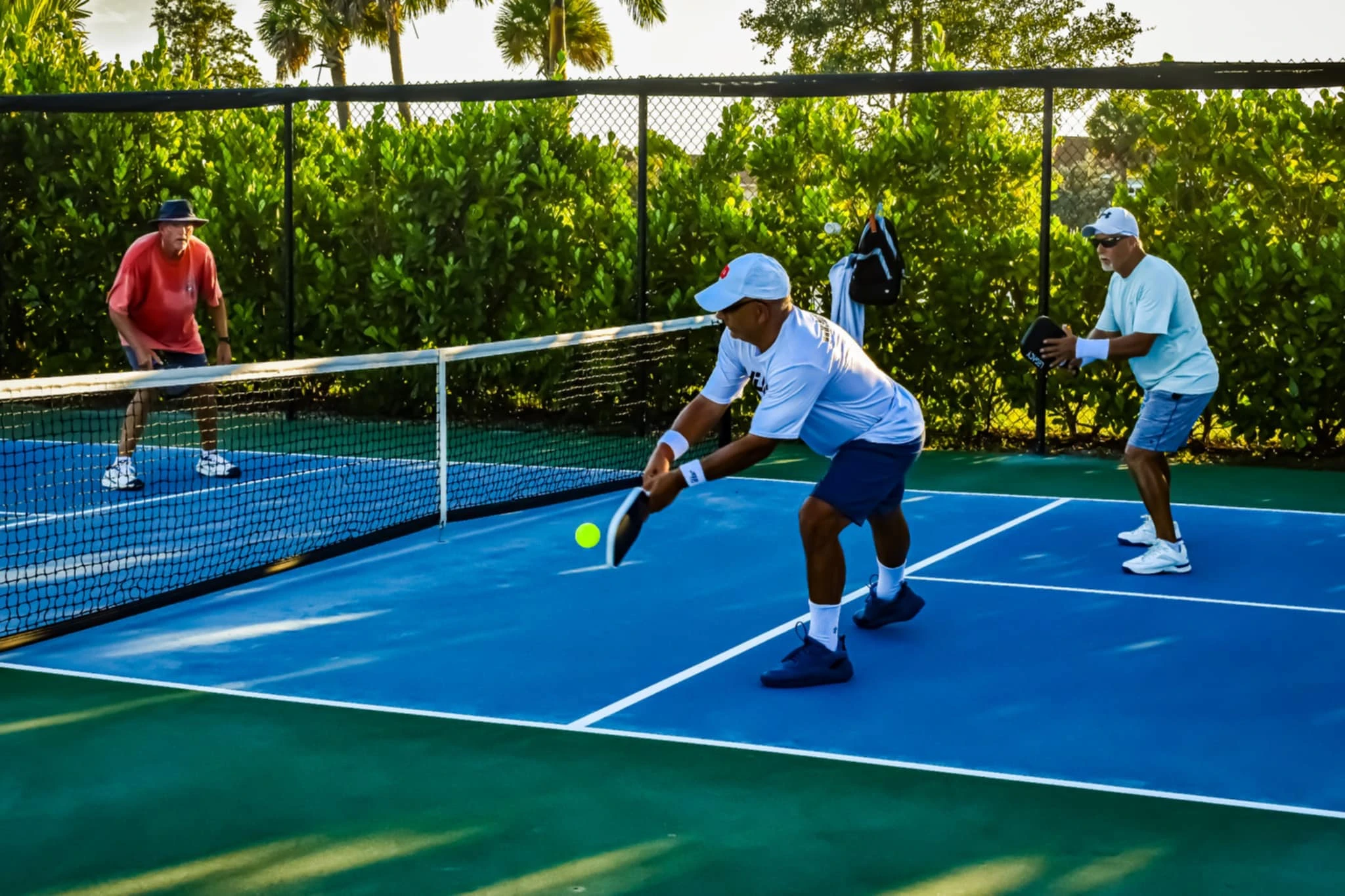
You want to smash a pickleball but keep the peace with your neighbors. The top low noise outdoor pickleball balls HOA OK—like hudef, CORE Stealth, Gamma Librarian, and the ONIX Fuse G2—make it possible. Many HOAs love these pickleballs for their quiet bounce and friendly sound. Pickleball never sounded so good!
Key Takeaways
-
Pick low noise pickleball balls like hudefsport or CORE Stealth. These balls help your games stay fun and quiet. They also help keep your neighborhood peaceful.
-
Look at your HOA rules before you buy pickleball gear. Show quiet ball choices to get approval. This helps you avoid noise complaints.
-
Use quiet paddles and choose good court spots. Talk with neighbors to lower noise. This helps everyone stay happy.
Why Quiet Pickleball Matters
HOA Noise Concerns
You step onto the pickleball court, paddle in hand, ready for action. Suddenly, the sharp pop-pop of pickleball noise bounces off nearby homes. Neighbors peek out, some with smiles, others with frowns. HOAs jump in when pickleball sound gets too loud. They want everyone to enjoy their homes without constant racket.
-
Residents say pickleball noise disrupts sleep and makes patios less relaxing.
-
The sound echoes, especially on outdoor pickleball courts close to houses.
-
Some HOAs even ban pickleball after too many noise complaints.
-
Lawsuits pop up when people argue about their right to play versus their right to peace.
-
HOAs must protect quiet enjoyment for all, so they investigate every complaint.
“The pickleball noise is more aggressive than you expect. It’s not just the ball—it’s the laughter, the cheers, and the endless pop-pop-pop. Some folks love it. Others want it gone.”
You want to play pickleball, not start a neighborhood feud. That’s why quiet pickleball balls matter.
Community Harmony
Pickleball brings people together. You meet new friends, laugh, and get moving. But too much pickleball noise can split a community.
-
Some neighbors love the game. Others just want peace.
-
Outdoor pickleball courts near homes make noise complaints more likely.
-
When pickleball sound gets out of hand, tempers flare and harmony fades.
-
HOAs step in to keep everyone happy, balancing fun and quiet.
You can help by choosing low-noise pickleball balls. You keep the game fun and the peace intact. Everyone wins when pickleball brings joy, not headaches.
Pickleball Ball Pain Points
Performance Issues
You pick your favorite pickleball and walk onto the court. The first serve feels awesome. After a few games, the ball gets soft and slow. You ask yourself, “Did my pickleball lose its bounce?” Many players notice balls get weak fast. They start to feel flat and lifeless. Some balls, like the Franklin X-40, are not very stiff at first. They get even softer after a few games. Others, like the DuraFast 40, last longer but still wear out. Look at this table to see how different pickleball balls compare:
|
Performance Issue |
Description |
Example Balls |
Impact on Play |
|---|---|---|---|
|
Stiffness Loss |
Balls lose stiffness quickly, causing them to feel "dead," with lower velocity, less spin, and easier deformation. |
Franklin X-40, Selkirk SLK Competition |
Reduced "pop", velocity, and spin; negatively affects play quality |
|
Durability |
Balls crack or lose stiffness after limited games, reducing useful life and performance. |
Franklin X-40, Selkirk SLK Competition, DuraFast 40 |
Shorter lifespan leads to frequent replacement and inconsistent play |
|
Initial Stiffness |
Higher initial stiffness correlates with better performance and longer durability. |
DuraFast 40, Selkirk SLK Competition, Franklin X-40 |
Better paddle interaction, more spin, and velocity |

Durability & Weather
Weather can mess up your pickleball game. Hot days make balls soft and squishy. Cold days make them hard and easy to crack. Humidity changes how the ball bounces. Outdoor pickleball balls need strong plastic to last in sun, rain, and wind. If you play in South Florida, you know sun and moisture ruin balls fast.
-
Outdoor balls use harder plastic for rough courts and wild weather.
-
Smaller holes help balls fly straight, even in strong wind.
-
Heat, humidity, and rain all work together to wear out pickleballs.
Visibility & Tracking
Have you ever lost a pickleball in the sun? You squint, guess, and swing but miss. Bright colors like neon yellow and neon green help a lot. These colors stand out on any court, in sun or shade.
-
Neon colors help you focus and react faster.
-
Pro tournaments use neon balls for this reason.
-
The right color helps you see the pickleball, even when it moves fast.
Cost & Replacement
Pickleball balls do not last forever. Most outdoor balls need to be replaced after 10 to 20 hours of play. You will see cracks, faded colors, or a weak bounce. If you play a lot, you will use many pickleballs.
|
Aspect |
Details |
|---|---|
|
Average Lifespan |
Outdoor pickleball balls last about 12 to 20 games before replacement. |
|
Lifespan in Time |
Typically 2 to 4 weeks of regular play, depending on frequency and intensity. |
|
Signs for Replacement |
Loss of bounce, visible cracks, deformation, color fading, uneven wear, size changes. |
Tip: Keep your pickleballs in a cool, dry place. Rotate them to help them last longer. Good balls from trusted brands save you money.
Criteria for Quiet Pickleball Balls
Noise Level
You want to play pickleball without waking up the whole neighborhood. The best quiet pickleball balls keep the noise down so you can focus on your game.
-
USA Pickleball’s Quiet Category asks for paddles under 80 dB and frequencies below 600 Hz.
-
Regular paddles and balls often hit 85 dB or more, which sounds like a marching band in your backyard.
-
Local rules usually set daytime noise at 60 dBA and nighttime at 55 dBA near homes.
-
Even with quiet gear, pickleball noise can reach 60 dB, about as loud as an office.
-
HOAs want pickleball noise to stay below these limits, so everyone stays happy.
Tip: If you hear pickleball noise echoing off your fence, you might need a quieter ball!
Durability
You need pickleball balls that survive wild weather and wild games. The top outdoor balls use tough plastic and smart hole patterns.
-
Strong materials help balls last longer on rough courts.
-
Smaller holes keep the ball flying straight, even when the wind picks up.
-
Good pickleball balls resist cracking, fading, and losing their bounce.
Playability
Pickleball should feel fun every time you serve. Quiet balls must bounce right, fly true, and stay visible.
-
Neon colors help you track the ball in bright sun or shade.
-
Consistent bounce means you never guess where the pickleball will land.
-
Stable flight keeps your shots sharp and your rallies long.
|
Feature |
Why It Matters |
What to Look For |
|---|---|---|
|
Bounce |
Predictable, lively play |
Consistent height, no dead spots |
|
Flight |
Smooth, stable rallies |
Even hole pattern, no wobble |
|
Visibility |
Easy tracking |
Neon yellow or green |
HOA Approval
You want your pickleball balls to pass the HOA test.
-
Many HOAs check for USA Pickleball Quiet Category or similar standards.
-
Some communities require proof that your pickleball balls and paddles meet noise limits.
-
Always ask your HOA before buying new pickleball gear.
-
Present quiet pickleball options to your board to keep everyone smiling.
Note: HOA approval means more pickleball, less drama, and zero angry neighbor texts!
Top Low Noise Outdoor Pickleball Balls HOA OK

Are you ready to meet the quietest pickleball balls? These top low noise outdoor pickleball balls HOA OK help you play without bothering neighbors. Let’s look at the best choices for peaceful games.
hudefsport Quiet Pickleball
You want a pickleball that feels good and sounds soft. The hudefsport Quiet Pickleball gives you both. This ball is made for outdoor use and helps lower noise. It bounces well, is easy to see, and does not echo loudly. Many players like how it keeps games fun but not noisy.
Features:
-
Strong for rough courts and bad weather
-
Neon color makes it easy to spot
-
Bounces and flies the same every time
-
Made for quiet play, great for HOA areas
Noise Rating:
You will hear a softer sound with each hit. The ball stays under most HOA noise rules, so it is great for quiet games.
HOA Suitability:
This ball is a top choice for HOA approval. Many neighborhoods suggest it because it is quiet and friendly.
Pros:
-
Works well on outdoor courts
-
Easy to see and follow
-
Lasts long and handles weather
-
Stops noise complaints
Cons:
-
Not for indoor-only games
Tip: If you want to play outside and keep peace, this ball is a smart pick.
CORE Stealth Quiet Ball
You want to play pickleball without waking up your street. The CORE Stealth Quiet Ball helps you do that. It looks like a regular pickleball but is much quieter. You can use it inside or outside, and it does not mark walls or floors.
|
Feature Category |
Details |
|---|---|
|
Main Features |
Silent play, same size and bounce as regular balls, safe for indoor use, strong for long games, works inside and outside, comes in a 3-pack |
|
Noise Level |
Almost silent, made for quiet places and indoor practice |
|
HOA Suitability |
Good for quiet spots and indoor use, does not hurt surfaces, great where noise is a problem |
|
Additional Notes |
Keeps bounce and lasts long, no marks on walls, good for practice and fun games |
Pros:
-
Very quiet—almost no sound
-
Can be used inside and outside
-
Safe for walls and floors
-
Good for practice and fun games
Cons:
-
Not for official tournaments
Note: This ball is perfect for top low noise outdoor pickleball balls HOA OK lists. You can play anytime and not worry about noise.
Gamma Librarian Foam Ball
You want a pickleball that feels soft and is very quiet. The Gamma Librarian Foam Ball is made for this. It is made of foam, so it makes a thud, not a pop. The bright yellow color is easy to see, and it bounces almost like a regular pickleball.
|
Characteristic |
Description |
|---|---|
|
Material |
Foam |
|
Color |
Bright yellow (easy to see) |
|
Diameter |
2.91 inches |
|
Weight |
0.847 ounces |
|
Bounce & Flight |
Feels like a normal pickleball when you play |
|
Surface Compatibility |
Good for hard and wood floors |
|
Noise Level |
About 60 decibels, half as loud as plastic pickleballs |
|
Noise Comparison |
Sounds like a tennis ball, with a soft thud |
|
Player Suitability |
Best for beginners, casual games, indoor play, and quiet places |
|
Limitations |
Light weight means wind can move it; not for serious or classic players |
-
Beginners who want a slower, softer game.
-
Indoor players or people in quiet neighborhoods.
-
Casual players who just want to have fun.
Who might skip it?
-
Serious players who want more speed.
-
People who like the feel of plastic pickleballs.
This ball is good for neighbors and HOAs. You can play late and not bother anyone.
Boomer (Shhh) Quiet Ball
You want to play pickleball and keep it quiet. The Boomer (Shhh) Quiet Ball is made for that. It uses special foam to make a soft, quiet sound. You can play for hours and no one will hear you. The bright color helps you see it, even in sunlight.
Features:
-
Very quiet foam build
-
Bright color is easy to spot
-
Bounces well for outdoor games
-
Made for quiet places
Noise Rating:
The Boomer (Shhh) Quiet Ball is almost silent. You can play near homes and not worry.
HOA Suitability:
Many HOAs like this ball because it is so quiet. It is a top pick for top low noise outdoor pickleball balls HOA OK.
Pros:
-
Super quiet—good for early or late games
-
Easy to see on any court
-
Soft feel for comfy play
Cons:
-
Not for official tournaments or fast games
Callout: If you want to keep your pickleball game secret, this ball is the best.
Ninja Ball
You want to play pickleball quietly, like a ninja. The Ninja Ball uses foam to bounce like a real pickleball. You can practice on patios, driveways, or even inside. The ball is almost silent, so you can play anytime.
-
The Ninja Ball is light and soft, so it does not hurt walls, floors, or nets.
-
You get three balls in one pack, so you can share or keep extras.
-
It is great for outdoor practice, especially in quiet neighborhoods.
-
You can hit it many times and not worry about noise.
-
The foam design is best for practice, not real games.
-
The bounce and speed are a bit different from plastic balls, but you get used to it.
You can practice quietly and never bother anyone. This ball is a favorite for top low noise outdoor pickleball balls HOA OK.
Confirming HOA Approval
Check HOA Rules
You want to play pickleball on your pickleball court, but you need to keep the peace. First, grab your HOA handbook or visit the HOA website. Look for rules about sports equipment, noise, and pickleball court use. Some HOAs have strict noise limits. Others list approved pickleball balls or paddles. If you cannot find clear answers, ask your HOA manager or board. You might need to fill out a request form or attend a meeting. Always check before you buy new pickleball gear. You do not want to spend money and then get a warning letter!
Tip: Snap a photo of your pickleball court and show where you plan to play. This helps the HOA understand your setup.
Present Ball Options
You found the quietest pickleball balls. Now you need to convince your HOA board or neighbors. Show them how your pickleball court will stay peaceful. Bring proof! Boards love facts and numbers. Use a table to show how quiet pickleball balls work:
|
Evidence Type |
Details |
|---|---|
|
Acoustical Performance Data |
Pickleblok® has an STC rating of 28 (28 dB transmission loss) |
|
Noise Reduction Measurement |
Sound meter tests show a 10-12 dB drop—about 50% less sound |
|
Independent Certification |
USA Pickleball Association and labs confirm STC 32 and NRC 1.04 |
|
Visual Sound Analysis |
ARTVIS® system shows real-time sound intensity |
|
Real-world Examples |
Poinsettia Park Pickleball Courts, Carlsbad, CA |
|
Legal Context |
Lawsuits from loud pickleball courts cost HOAs money |
Loud pickleball games have led to lawsuits and big bills for HOAs. You can help your HOA avoid trouble by showing strong noise reduction data. Boards want to protect everyone’s peace and their budget. When you present quiet pickleball balls with real evidence, you become the hero of your pickleball court!
Reducing Pickleball Noise

Equipment Choices
You want to play pickleball and keep things peaceful. Start with your gear! Quiet paddles like the GAMMA 405 and GAMMA 505 use special technology to soften every hit. These paddles, with SensaPoly Core and NeuCore, hush the sound without making you lose your edge. You can also try grips, overgrips, and vibration dampeners to muffle the noise even more. When you pair these with quiet pickleball balls, your game sounds more like a gentle tap than a drumline. Your neighbors will thank you, and you still get to smash those winning shots.
Court Location & Timing
Where you play pickleball matters just as much as what you play with. Courts right next to homes can turn a friendly match into a neighborhood showdown. If you can, pick a spot farther from houses. Play during the day—think 8am to 6pm—so you don’t wake up sleepy neighbors or interrupt dinner. Some communities put up sound barriers or walls to keep the noise in check. You can also set rules for quiet play and remind everyone to keep the cheering down. Smart choices about court location and timing make pickleball fun for everyone.
Communication Tips
Talking with your neighbors and HOA can work wonders. Try these strategies:
|
Strategy Category |
Description |
|---|---|
|
Open Communication |
Host regular meetings or forums so everyone can share their thoughts about pickleball noise. |
|
Community Feedback |
Set up a way for people to give feedback and suggest improvements for court use and noise. |
|
Tech Tools |
Use online tools to schedule games and collect feedback, making it easy to manage court time. |
|
Balancing Interests |
Work together to keep the peace while still enjoying pickleball in your community. |
Tip: Share your own stories about pickleball fun and listen to your neighbors’ concerns. A little kindness goes a long way!
You now know the best low noise outdoor pickleball balls for HOA play—like hudefsport, CORE Stealth, and Gamma Librarian. Want peaceful games?
-
Check your HOA rules.
-
Suggest noise barriers or smart court placement.
Pick your favorite quiet ball and keep your neighborhood smiling! 🏓
FAQ
What makes a pickleball ball "quiet"?
A quiet pickleball ball uses softer materials or foam. You hear a gentle thud, not a loud pop. Your neighbors will thank you!
Tip: Look for balls labeled "quiet" or "HOA approved."
Can I use these balls for tournaments?
Nope! Most quiet balls are for practice or friendly games. Official tournaments require standard balls. Save your stealthy shots for home.
How do I know if my HOA allows these balls?
Check your HOA rules or ask the board. Show them the ball’s noise rating. You might become the neighborhood pickleball hero!















